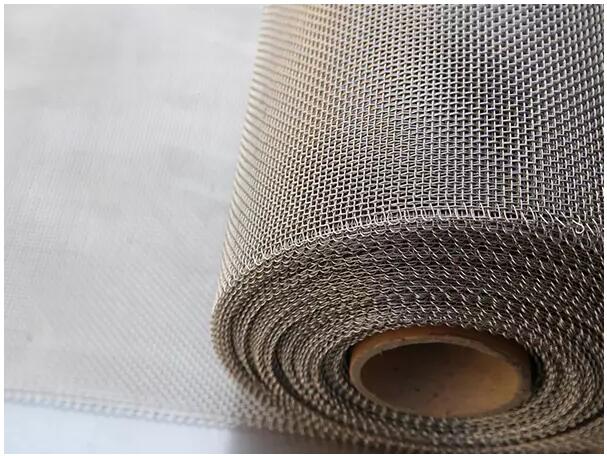-
+86 15030157877
-
sales@galvanizedmetalmesh.com
Oct . 17, 2024 13:56 Back to list
Iron Wire Production Facility for High-Quality Manufacturing and Innovative Solutions
The Iron Wire Factory A Hub of Innovation and Production
The manufacturing industry has always been the backbone of economic development, and iron wire production is no exception. An iron wire factory serves as a pivotal site for transforming raw materials into essential products used in various industries, ranging from construction to automotive. This article explores the operations, significance, and innovations within an iron wire factory, showcasing its crucial role in modern manufacturing.
The Manufacturing Process
At the heart of the iron wire factory lies a multi-step manufacturing process. It begins with the selection of high-quality iron ores, which are then subjected to a smelting process in a blast furnace. This fundamental step transforms ore into molten iron, which is later cooled and solidified into mainly iron ingots. Once the iron ingots are ready, they are transported to the wire drawing machines.
Wire drawing is a crucial stage where thick iron rods are drawn through a series of dies to reduce their diameter and increase their length. This process not only gives the wire its characteristic shape but also enhances its tensile strength. The factory typically employs several drawing lines to cater to different wire gauges, allowing for a wide product range.
Post drawing, the wires often undergo additional processes such as annealing, which involves heating and cooling to relieve stress and enhance ductility. Finally, the wires may be coated for corrosion resistance or further processed into specific products like barbed wire, fencing, or automotive components.
Applications of Iron Wire
The versatility of iron wire makes it an indispensable material in various applications. In construction, it is used for reinforcing concrete, creating a robust framework that ensures structural integrity in buildings and infrastructure. The automotive industry also relies heavily on iron wire for manufacturing parts such as springs, brake cables, and various types of fittings.
Additionally, iron wire finds its application in agriculture, particularly in the production of fencing for livestock, trellises for crops, and support structures for plants. The durability and tensile strength of iron wire ensure that it can withstand environmental factors, hence providing long-term solutions across these sectors.
Economic Impact
iron wire factory

Iron wire factories play a significant role in the economy by providing employment opportunities and contributing to industrial growth. They also stimulate progress in related industries, such as transportation, logistics, and raw material supply, creating a web of economic interdependence.
Moreover, as global demand for iron wire products continues to rise, factories must adapt and innovate to stay competitive. This includes the adoption of advanced technologies, automation, and sustainable practices.
Embracing Innovation
In today’s fast-paced industrial landscape, innovation is critical for success, and iron wire factories are no exception. Many factories are incorporating automation and robotics in their production lines to increase efficiency and reduce human error. This not only speeds up production but also allows for greater consistency and quality control.
Furthermore, the shift towards sustainability has prompted many factories to explore eco-friendly practices. This includes recycling scrap metal and adopting energy-efficient processes to minimize their environmental footprint. By implementing these practices, iron wire factories not only contribute to a healthier planet but also align themselves with the growing consumer demand for sustainable products.
Quality Control and Standards
To ensure that the iron wire meets industry standards, rigorous quality control measures are put in place throughout the manufacturing process. This includes testing the tensile strength, flexibility, and resistance to corrosion of the finished products. Compliance with international standards is not merely a regulatory requirement; it also enhances the factory's reputation and competitiveness in the global market.
Conclusion
The iron wire factory is more than just a production facility; it is a cornerstone of modern manufacturing that bridges various industries. Its ability to adapt to changing market demands, embrace innovation, and implement sustainable practices positions it as a vital player in the economic landscape. As technology continues to advance and the emphasis on sustainability grows, the iron wire factory is poised to remain at the forefront of manufacturing excellence, providing indispensable products that shape the world around us.
-
Hexagonal Gabion Mesh: Durable Stone Cages for Landscaping
NewsJul.22,2025
-
Premium Black Brick Welded Mesh - High Strength & Corrosion Resistant
NewsJul.21,2025
-
AI SEO Optimizer
NewsJul.20,2025
-
High-Quality Chicken Wire Panels Leading Manufacturer & Exporter
NewsJul.08,2025
-
High-Quality Concrete Reinforcement Wire Mesh – Reliable Steel Mesh Manufacturers & Exporters
NewsJul.08,2025
-
High-Quality Aluminum Expanded Mesh Leading Manufacturers & Exporters
NewsJul.08,2025



